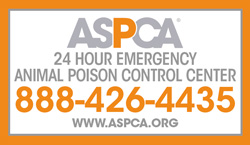How to induce vomiting in dogs | Dr. Justine Lee
How to induce vomiting in a dogs
Did your dog eat something poisonous? Before inducing vomiting… read on!
Veterinarians often cringe when pet owners find information (or shall I say “mis-information”) on the Internet. Unless it comes from a reputable source, please be smart about what information you use when it comes to medical treatment of your dog or cat (or kid or family member!). That said, I want you to be able to separate the wheat from the chaff, so you can provide the best care for your pet.
As a toxicologist, I see a lot of accidental poisonings in dogs and cats. That’s because common household items can be really dangerous to your pets (like grapes, raisins, chocolate, human medications, pain medications, chemicals, etc.). With that, I see people trying all different methods to induce vomiting in their dog or cat. Some methods can be life threatening. Some methods can be dangerous. Some methods can make your pet worse. And some just plain don’t work. So, when it comes to trying to induce vomiting in your pet, please take heed!
If your pet got into something poisonous, you always want to call your veterinarian or ASPCA Animal Poison Control Center first. Why? Because sometimes you can cause more injury or harm if you induce vomiting when it’s not appropriate.
First, we never recommend inducing vomiting with these types of poisons:
- Corrosive chemicals (e.g., oven cleaners, drain cleaners, batteries, lime removal products, etc.) – can cause more damage to the esophagus if you induce vomiting.
- Hydrocarbons or petroleum distillates (e.g., kerosene, gasoline, motor oil, etc.). These oily substances are easily inhaled into the lungs, causing a severe aspiration pneumonia.
In dogs, we only recommend inducing vomiting at home in these situations:
- If the substance ingested was poisonous
- Recent ingestion (e.g., your dog just ate grapes less than an hour ago)
- Your dog is asymptomatic, meaning he’s not showing any signs of the poisoning at all
- Your dog is healthy and isn’t at risk for inhaling the vomit into his lungs (e.g., he doesn’t have previous medical problems like an abnormal airway [e.g., laryngeal paralysis, collapsing trachea, etc.], an abnormal esophagus [e.g., megaesophagus, etc.], or isn’t brachycephalic [e.g., he has a smooshed face and is more at risk for inhaling his vomit into his lungs. Brachycephalic breeds include the following: English bulldogs, Pekingese, Shih-Tzus, Pugs, etc.].
- For dogs, keep in mind that the only currently safe and recommended “at home” product to induce vomiting is 3% hydrogen peroxide.
We never recommend inducing vomiting in dogs using any of these methods:
- Physically sticking a finger down the throat (yes, people do this and it’s completely asinine!)
- Mustard
- Salt (due to side effects from causing a very elevated sodium level)
- Syrup of ipecac (due to profound side effects)
Again, always check with your veterinarian or an animal poison control center first prior to inducing vomiting. Sometimes it can be too late or can cause more harm if you induce vomiting inappropriately.
Cat owners should be aware of the following: There’s nothing you can safely give to CATS if they’ve eaten something poisonous. Products like salt, mustard, syrup of ipecac, and hydrogen peroxide aren’t safe to give in cats, and you need to seek immediate veterinary attention if your cat ate something poisonous. Your veterinarian has more effective drugs called alpha-adrenergic agonist drugs to help induce vomiting.
So, for dog owners, just how much hydrogen peroxide do we give? Keep in mind that you can give too much which can result in bloody vomiting and uncontrollable vomiting. You always want to use the correct amount. In general, the dose of hydrogen peroxide in dogs is approximately 0.5 – 1 ml per pound weight. If your dog weighs 50 pounds, you can give 25 – 50 mls of fresh, non-expired hydrogen peroxide orally, once. Keep in mind that 15 mls = 1 tablespoon (or 5 mls = 1 teaspoon), so this would be approximately 1.5 – 3.5 TBSP.
When in doubt, make sure you check with your veterinarian first. Always be safe and never rely on Dr. Google alone!
As previously published by Dr. Justine Lee on www.PetHealthNetwork.com.





No Comments
Trackbacks/Pingbacks